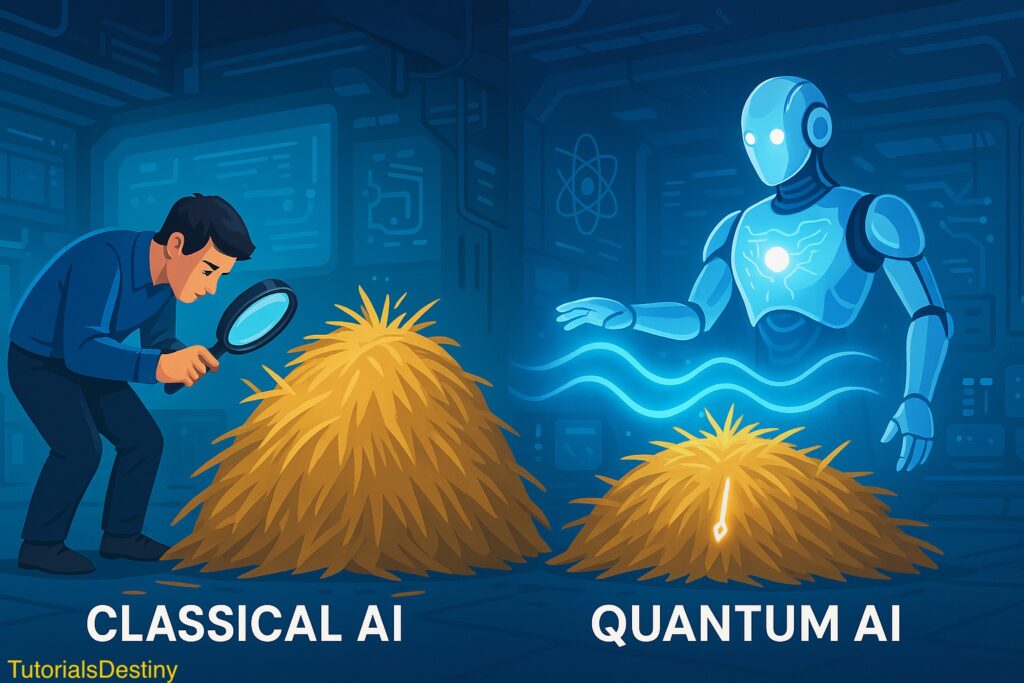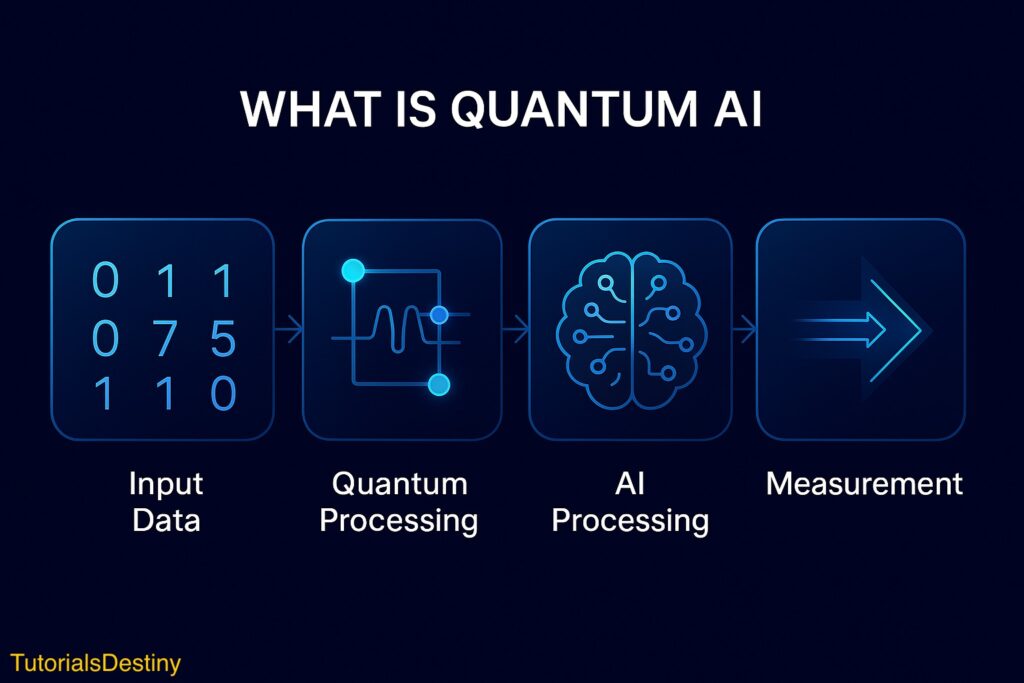Introduction
Quantum AI is the revolutionary blend of quantum computing and artificial intelligence — two of the most transformative technologies of the 21st century. While AI helps machines learn patterns, optimize decisions, and automate tasks, quantum computing enables unimaginable computing power by harnessing quantum mechanics.
Together, they create a new field where machines can solve problems that were previously impossible or highly inefficient using classical computers.
🌟 Think of it as AI on quantum steroids. Faster, smarter, and capable of exploring massive possibilities all at once.
The Core Concept
Classical computers use bits — either a 0 or 1. But quantum computers use qubits, which can exist as 0, 1, or both at the same time (a state called superposition). This ability to hold multiple states simultaneously leads to quantum parallelism.
When combined with AI, this allows:
- Faster learning and inference for AI models
- Better pattern discovery in massive, complex datasets
- Handling uncertainty and probabilistic outcomes more naturally
- Exponential parallelism in data search and optimization
📌 With quantum-enhanced AI, problems that once took years to solve may now take seconds.
Why is Quantum AI Important?
Traditional AI models are limited by the speed, memory, and linear structure of classical computers. When faced with massive data, they hit a wall.
Quantum AI offers a breakthrough:
| 🔍 AI Challenge | 💡 Quantum Advantage |
|---|---|
| High-dimensional data | Explore vast solution spaces simultaneously |
| Complex optimization | Use quantum annealing for efficient convergence |
| Pattern recognition | Improved through entanglement and interference |
| Probabilistic models | Quantum superposition maps naturally to uncertainty |
| Neural network training | Quantum algorithms speed up backpropagation |
✅ Quantum AI = better answers, faster learning, and intelligent decisions at scale.
Real-World Analogy
Imagine trying to find a needle in a haystack:
- Classical AI goes straw by straw — it’s fast, but still sequential.
- Quantum AI evaluates all the straws at once and points to the most probable needle locations immediately.

That’s the magic of parallelism and probability combined.
Quantum AI in Action
Quantum AI is no longer theoretical — it’s already being tested and applied in cutting-edge fields:
- 🧬 Healthcare: Accelerated drug discovery, genetic analysis, and protein folding predictions
- 📉 Finance: Near-instant portfolio optimization, real-time risk management, and fraud pattern recognition
- 🔐 Cybersecurity: Quantum cryptography for unbreakable encryption and AI-enhanced threat detection
- 🌱 Climate Science: Modeling complex climate systems for accurate long-term forecasting
- 🚛 Logistics: Optimal route planning using quantum-enhanced AI algorithms
🚨 Major companies like Google, IBM, Microsoft, D-Wave, and Xanadu are already racing to bring Quantum AI into the mainstream.
How It Works at a Glance
- Input: A huge dataset is encoded into quantum states
- Quantum Processing: Quantum gates process the data in superposition and entangled states
- AI Algorithm: Quantum-enhanced machine learning extracts patterns and insights
- Measurement: Results collapse into a usable solution

This process can dramatically outpace classical deep learning methods.
Quote to Inspire
“Quantum AI is not just about faster computing — it’s about a smarter, deeper understanding of data and reality.”
— Quantum AI Research Lab, MIT
Summary
- Quantum AI = Quantum Computing + Artificial Intelligence
- It enables machines to learn faster, explore deeper, and handle problems that stump classical AI
- Already making waves in healthcare, finance, cybersecurity, and beyond
- It’s not just the future — it’s already here
What You’ll Learn Next
Now that you understand what Quantum AI is, the next lesson will guide you through how it compares to classical AI and where it truly stands apart.
[👉 Continue to: Classical AI vs Quantum AI]